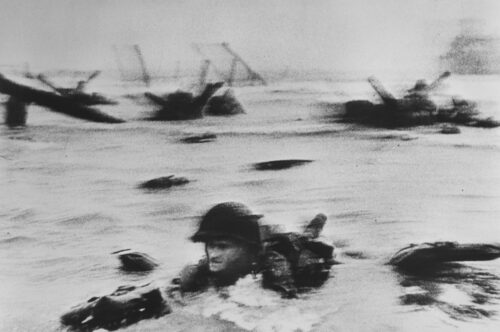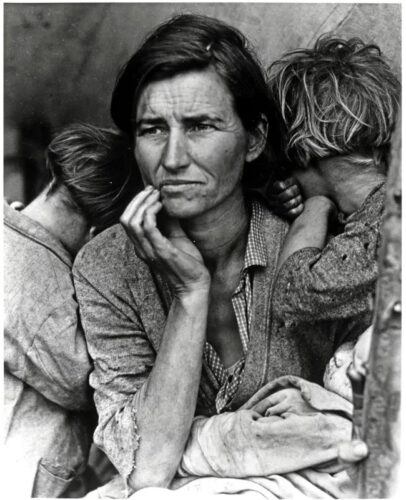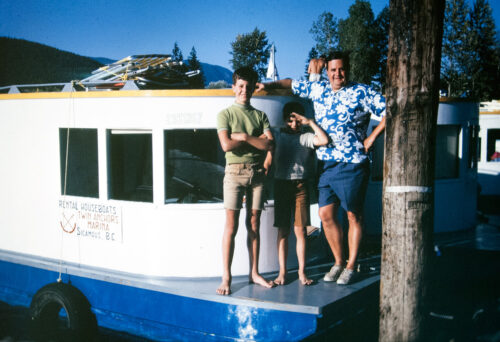In these times, we are bombarded with 100’s or 1,000’s of photos each day. We scroll past them on Facebook or Instagram, we see them in magazines and newspapers and take fresh shots on our phones. Out of all of these images, we see some good ones, some bad ones, the boring, the funny, the confusing, the emotional and if we’re lucky – a “great” one.
I’ve seen a LOT of photos in my lifetime. In a previous life, I worked in photo labs and saw a lot photos either come out of the printer or have a customer share them with me. I’ve read countless photography books (and still do), and of course, I see images online now. I scroll through Facebook and my Instagram feed is composed mostly of photographers I follow. But how often do I see a “great” one?
A photo is like a song in some ways – what makes a “great song”? Is it one that it is technically perfect or original? Is it one that we’ve heard so many times before that it teleports us to another time? Is it a song we danced to with a high school crush all those years ago? Is a great song one which we always want to hear and don’t turn off mid-tune? Is it one that changes our mood? Think of a “great” song and then think about why you feel that way towards it.
Now try to picture a great photo. What’s the first one that comes to mind? Maybe it’s a photo of you and your grandmother that recalls a very special time in your life. Maybe it’s a prize winning journalism photo that grips you on an emotional level. Maybe it’s one you shot that you’re particularly proud of. What ever your answer is, I can guarantee you that it won’t be the same as others who are asked the same question.
IMAGE QUALITY
As photographers, we are taught that your photos should be sharp, well exposed and have good composition. All of these conditions should make a great photo, right?

If you look at the above photo, you can see it is blurry, not very well composed and frankly – a bit of a mess. BUT – it is a great photo! It’s an historic photo, and of the very few which were taken during the D-Day invasion. Robert Capa was a famous photographer known for many outstanding images, and being close to the action. What this image shows so well is the complete chaos the soldiers felt as they approached the beach under heavy fire. Would a sharp, bright, well composed image convey the same feeling? I don’t think so, but when an experienced war photographer is so unnerved he can’t change his film – great images like this are the result. Read more about these images here.
Greatness in a photograph will not always come with technical perfection. In some cases, it’s the imperfections that make an image stand out from the others. As a photographer, you’ll capture an image the best you can. The result may not be the perfect shot – but will still be a “great photo”. And always remember any photo is better than no photo.
THE HUMAN TOUCH
It’s natural to feel a connection to other people in photographs. In the image above, you can’t help but feel for the soldier trying to survive in the frigid water while being shot at. This next image is another famous “great photo”, but is sharp, well exposed and perfectly composed. It looks like a quick, candid shot, but is part of a series that Dorothea Lange shot of this “Migrant Mother” during the great depression.

“She and her children had been living on frozen vegetables from the field and wild birds the children caught. The pea crop had frozen; there was no work. Yet they could not move on, for she had just sold the tires from the car to buy food.”
You may not know of this mother’s plight, but you can see in her eyes that life is not easy. The children hide their faces. As you look closer, you see the worn clothes they all wear. This image became a icon of photography for depicting the human costs of the great depression. It works so well as a documentation of the times that it is a “great photo”.
When you’re taking a portrait, either a casual shot or a planned studio shot, you want to try to capture some part of your subject’s identity. Maybe it’s an expression, perhaps you shoot them doing something they enjoy – or maybe they’re just relaxing and you capture the mood of the moment. The goal should be to find some aspect of that person and try to record it the best you can.
THE PERSONAL TOUCH
For most (all?) of you, this next photo is not great. It’s a copy of old slide – actually shot from a projection on a wall. To me, it IS a great photo.

This is one of the very few photos I have of me with my Dad. It was taken during one of our last summer vacations we had as a family. So to me, it’s a “great” memory – a record of a very special time. To you, it’s three people standing on an old houseboat! I’m sure you have some great photos in a shoe box at home as well.
The thing about these “great” photos is that you likely don’t know you’re taking them at the time you press the shutter. It might take a year or thirty until the greatness reveals itself. Some times you will know when you’re taking a very special shot, so slow down, enjoy the moment and shoot to the best of your abilities.
CONNECTING WITH NATURE
Another popular genre of photography is of course, the landscape. What is it about landscape photography that makes us want to shoot a scene of some location and share it with others? Back in the day (1800s) landscape photography was used to show places that a vast majority would see for the very first time. These days, it is the foreign lands and wild places that still capture our imagination. But there is also a lot to be said for taking the familiar and giving it a new perspective. What would you consider a “great” landscape or nature photo?

This is a sunset photo I shot a few years ago. A lot people really like it, and at the time I was quite happy with it. Over time though, I’ve grown tired of it and maybe I’ve just seen it too many times. Other people love the colours and the reflection. The composition and exposure seem good. So to some it’s a “great” photo as it is a shot of nature that makes them feel at peace. I see it and think of scrambling around in the mud trying to find a good composition before I lost the light!
But a great nature photo has to connect with the viewer at some emotional level, much like a portrait or other type of image. Maybe a powerful waterfall invokes a feeling, which is different from a warm sunset. Or a wide open pastoral field gets a different response than a narrow canyon. All of these emotional responses are equally valid when looking at a great landscape image. Of course if you shot one at a special time, that image could take you right back to that date and time – making it a “great” photo.
LOCATION LOCATION LOCATION
Can a photo be considered great based solely on where it was taken? Not really, but location can be a big factor. Think of a favourite vacation photo. Is there a great photo that pops into your mind’s eye? Maybe it’s just you and friend standing on a beach, a quick shot that a passerby took of you? Maybe it’s a photo of the Colosseum in Rome that you shot after dreaming your whole life to see it in person?
I think that if a photo is to be considered “great” based on its location, then it should tell you a little bit about the area, and hopefully make you want to learn more. I’ll also say that these types of images will likely be sharp and well composed to show off the location as well as possible.

Now I’m not including my images in this post to say that they’re “great” – but merely to have you think about how you look at new photos and how you assess them. This photo I shot in Quidi Vidi is technically sound, well composed and tells about the location. Is it “great”? Who knows! 😀 I like it a lot, it brings back some great memories and I think (hope) it make you pause and wonder a little more about this particular location.
SUMMARY
“Beauty is in the eye of the beholder.” Photography, like any art form, is very subjective. What I consider a “great photo” might get a big thumbs down from you. Some images become classic and truly represent photography at its highest form, and many people will consider these images “great”.
How does ‘greatness’ affect you as a photographer? I look at a lot of images on Instagram and am constantly blown away by an artist’s creativity, technique and other skills. I purposely look for “great” images every day to challenge myself to get better. I want to be more creative, better technically and produce photographs that say something to more viewers. I have no intention of copying these images, but by surrounding myself with “great” images, my standards go up. Again – the images that I look to for inspiration will be different than what you seek out.
Go look for greatness! Look for imagery that inspires you – not only as a photographer, but as a human being. Look for genres, themes and subjects that may help you define your own style. Review your own images and look for the greatness you’ve already created! What will be your next great photo?
Thanks for reading! I hope you enjoyed this post. If you have any comments, please leave them below or feel free to email me at art@artwhitton.com
